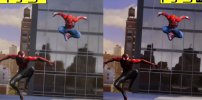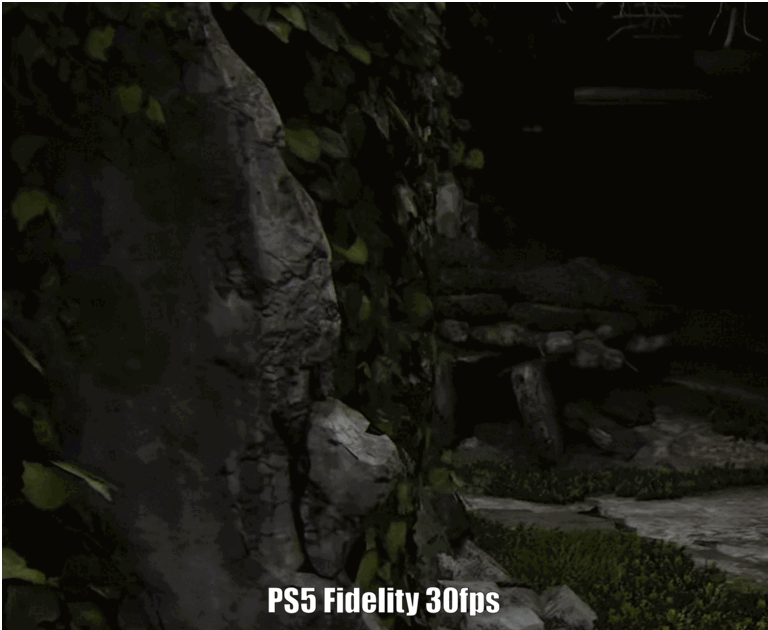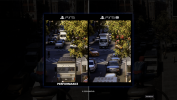You are using an out of date browser. It may not display this or other websites correctly.
You should upgrade or use an alternative browser.
You should upgrade or use an alternative browser.
Sony PlayStation 5 Pro
- Thread starter chris1515
- Start date
I personally didn't see anything worth spending time on there with the footage shown.Maybe they'll do another article with the others games or an analysis just about Spider-man 2, which to me, looked like the most impressive update.
Insomniac added RT shadows and also improved the quality of RT reflections (4x higher resolution in one scene).
On top of double framerate and added RT shadows we can much sharper RT reflections here. They are much cleaner than before. Beat everything DF showed in their video. They spent minutes on Hogwart displaying barely nothing better but ignored this one. The only explanation is they want to make an article out of SM2 as it also showed others improvements in motion, PSSR looks better than custom Instomniac solution to resolve details. Maybe this explains the better looking reflections BTW. Also it could be interesting to compare SM2 in the 60fps performance mode to see if all this is caused by 30fps. SM2 simply deserves an analysis on its own IMO.I personally didn't see anything worth spending time on there with the footage shown.

Why do you need a DF analysis when you've already done your own and came to your own conclusion?On top of double framerate and added RT shadows we can much sharper RT reflections here. They are much cleaner than before. Beat everything DF showed in their video. They spent minutes on Hogwart displaying barely nothing better but ignored this one. The only explanation is they want to make an article out of SM2 as it also showed others improvements in motion, PSSR looks better than custom Instomniac solution to resolve details. Maybe this explains the better looking reflections BTW. Also it could be interesting to compare SM2 in the 60fps performance mode to see if all this is caused by 30fps. SM2 simply deserves an analysis on its own IMO.
View attachment 12046
You know what I see in that screenshot? PSSR sharpening the image, motion blur being reduced because the doubling of framerate, and cleaner reflections with what looks like the same LOD.
840p and 800€, makes sense.It is public to everybody now.
I'mDudditz!
Newcomer
840p and 800€, makes sense.
The most ignorant comment in the entire thread. Congratulations buddy.
Pretty sure nothing has been shared.I don't think anyone knows as the PSSR algorithm hasn't been shared. The paper (patent?) we saw talked of filling holes, that's true, But where do those holes come from? Moving pixels aside leaving gaps between them? Or rendering sporadic pixels in a surface but keeping the edges?
How do you render the edges efficiently without rendering the full triangles?
This does sound they are using the id-buffer rasterization which was introduced in Ps4pro.
You can render and shade normally and ask gpu to rasterize id-buffer into larger buffer at the same time.
Their geometry rendering upscaling was used in couple games, they floodfill/grow pixel values within polygon id. (And possibly average for remaining holes.
Result is similar to using MSAA for coarse shading or VRS. (With some caveats, like not every polygon in subpixels have shaded sample.)
Been wondering, if someone would test it with temporal AA.
Last edited:
Is there something that makes you suspect RT shadows? I'm seeing every indication they are still shadowmaps.Maybe they'll do another article with the others games or an analysis just about Spider-man 2, which to me, looked like the most impressive update.
Insomniac added RT shadows and also improved the quality of RT reflections (4x higher resolution in one scene).
Also not sure about improvements to the reflections - in the direct-feed capture they still appear a little rough. Fine but the resolve is still a bit messy in motion.
My impression of Spider-Man 2 FWIW is that it's probably a very typical PSSR upgrade - similar underlying settings as performance mode and similar internal resolutions, but with PSSR to 4K. Hard to tell how effective that upsampling is because we don't have extended gameplay footage.
snc
Veteran
Hi Olie, have question about your lou2 analyze. You mention with exception of grass artifact pssr is on pair with 4k native. But there are comparisons showing it even above it:Is there something that makes you suspect RT shadows? I'm seeing every indication they are still shadowmaps.
Also not sure about improvements to the reflections - in the direct-feed capture they still appear a little rough. Fine but the resolve is still a bit messy in motion.
My impression of Spider-Man 2 FWIW is that it's probably a very typical PSSR upgrade - similar underlying settings as performance mode and similar internal resolutions, but with PSSR to 4K. Hard to tell how effective that upsampling is because we don't have extended gameplay footage.

Did you notice it ?
One thing you have to think about, is that all temporal techniques for upscaling, or even TAA at native res, retrieve more detail by default, and inner surface detail, at higher frame-rates due to the spatial distance between samples being smaller.Hi Olie, have question about your lou2 analyze. You mention with exception of grass artifact pssr is on pair with 4k native. But there are comparisons showing it even above it:

Did you notice it ?
My hope with PSSR like DLSS is that it will improve overtime and these are not the final upscaling results. It took Nvidia at least 3 generations to get DLSS to the point where it's today, I'm sure it will take Sony time as well.
I suspect that the PS5Pro will be a good testbed in the real world for PSSR and RT enhancements prior to locking specs for the next gen. Hopefully, Sony and AMD are getting good feedback on what is working and isn't.
I suspect that the PS5Pro will be a good testbed in the real world for PSSR and RT enhancements prior to locking specs for the next gen. Hopefully, Sony and AMD are getting good feedback on what is working and isn't.
My hope with PSSR like DLSS is that it will improve overtime and these are not the final upscaling results. It took Nvidia at least 3 generations to get DLSS to the point where it's today, I'm sure it will take Sony time as well.
I suspect that the PS5Pro will be a good testbed in the real world for PSSR and RT enhancements prior to locking specs for the next gen. Hopefully, Sony and AMD are getting good feedback on what is working and isn't.
It can only get better over time. They have to train the model(s) for the upscaling and given the amount of time it's taken for DLSS to mature I don't see why we would expect miracles from Sony on their first attempt.
Tree shadows are rendered differently here, they are more diffuse. But maybe it's because of the motion or other things.Is there something that makes you suspect RT shadows? I'm seeing every indication they are still shadowmaps.
Also not sure about improvements to the reflections - in the direct-feed capture they still appear a little rough. Fine but the resolve is still a bit messy in motion.
My impression of Spider-Man 2 FWIW is that it's probably a very typical PSSR upgrade - similar underlying settings as performance mode and similar internal resolutions, but with PSSR to 4K. Hard to tell how effective that upsampling is because we don't have extended gameplay footage.

The softer PS5 Pro shadows on the garage have a clear band as if between shadow cascades.Tree shadows are rendered differently here, they are more diffuse. But maybe it's because of the motion or other things.
View attachment 12055
I'm pretty sure that's just a lower res shadow cascade, as the PS5 Performance mode has lower res shadows. If you look at a shot like the attached, I think it's pretty obvious that we're still looking at CSMs.Tree shadows are rendered differently here, they are more diffuse. But maybe it's because of the motion or other things.
View attachment 12055
Attachments
motion blur?On top of double framerate and added RT shadows we can much sharper RT reflections here. They are much cleaner than before. Beat everything DF showed in their video. They spent minutes on Hogwart displaying barely nothing better but ignored this one. The only explanation is they want to make an article out of SM2 as it also showed others improvements in motion, PSSR looks better than custom Instomniac solution to resolve details. Maybe this explains the better looking reflections BTW. Also it could be interesting to compare SM2 in the 60fps performance mode to see if all this is caused by 30fps. SM2 simply deserves an analysis on its own IMO.
View attachment 12046
In a number of comparisons for the sony video they had the PS5 side with motion blur on and motion blur off on the PS5Pro side, for example, Ratchet and Clank.
DF video on FF7R - very impressive... Damn.
snc
Veteran
First realy impressive improvement, dynamic pssr at 1080p-1296 range gives better results than native 4k (tough with less stable image), awsome !DF video on FF7R - very impressive... Damn.
Panino Manino
Newcomer
First realy impressive improvement, dynamic pssr at 1080p-1296 range gives better results than native 4k (tough with less stable image), awsome !
Is not as impressive as it seems because FF7R image quality was just atrocious.
That was probably the "best case scenario".
To better judged what PSSR can do you need to see what it does to better original image quality.
Similar threads
- Replies
- 8
- Views
- 914
- Locked
- Replies
- 260
- Views
- 21K

